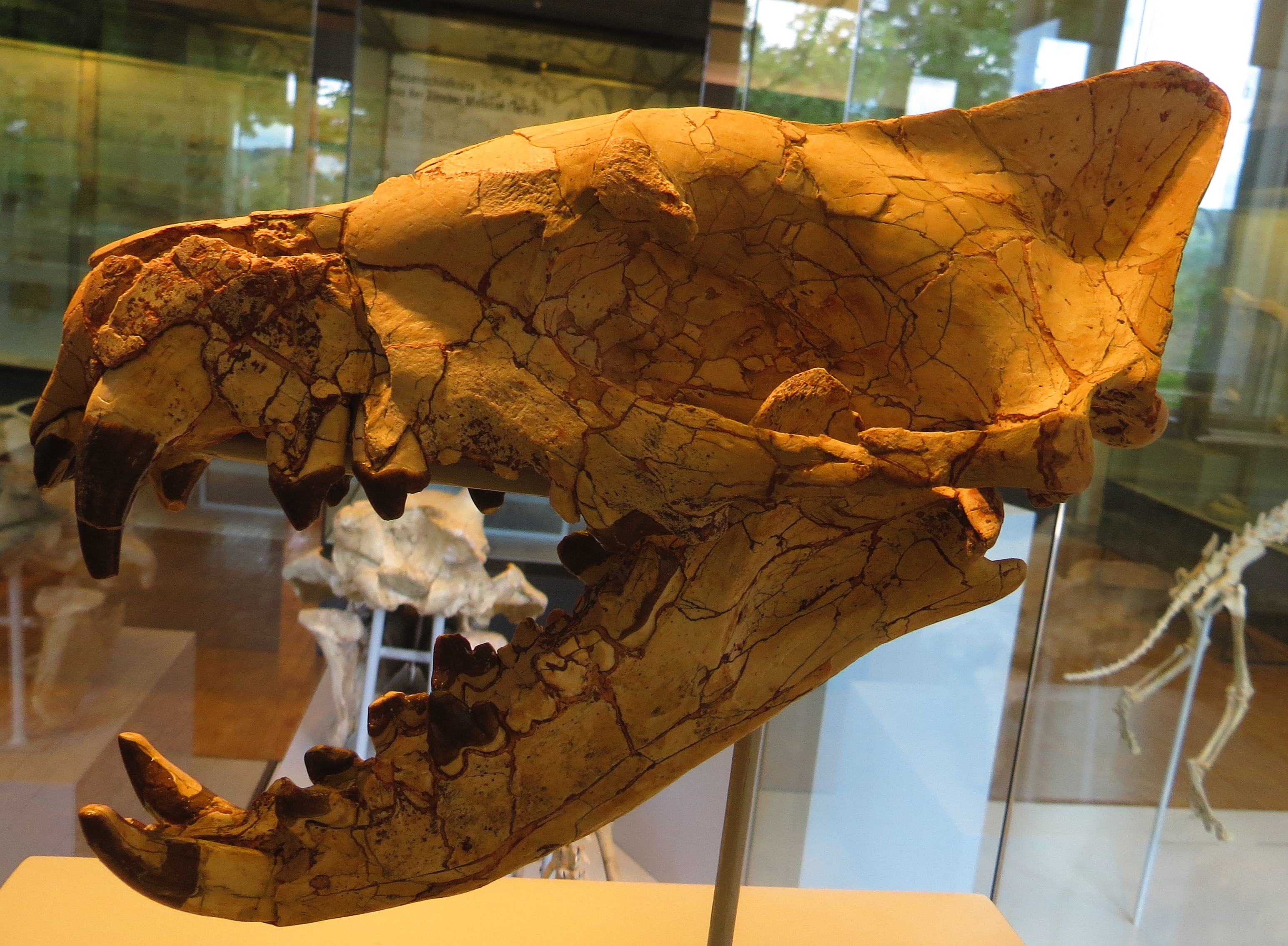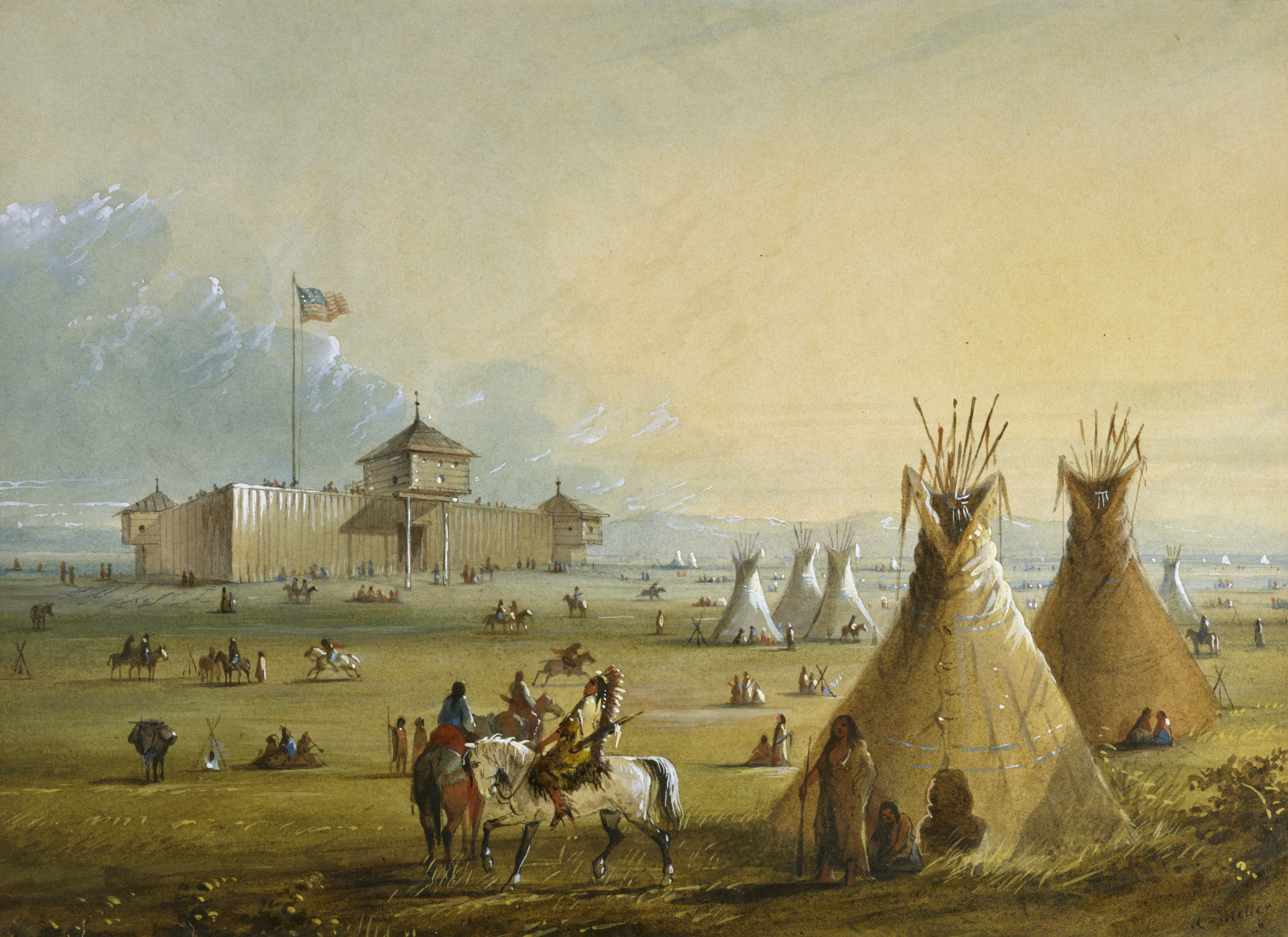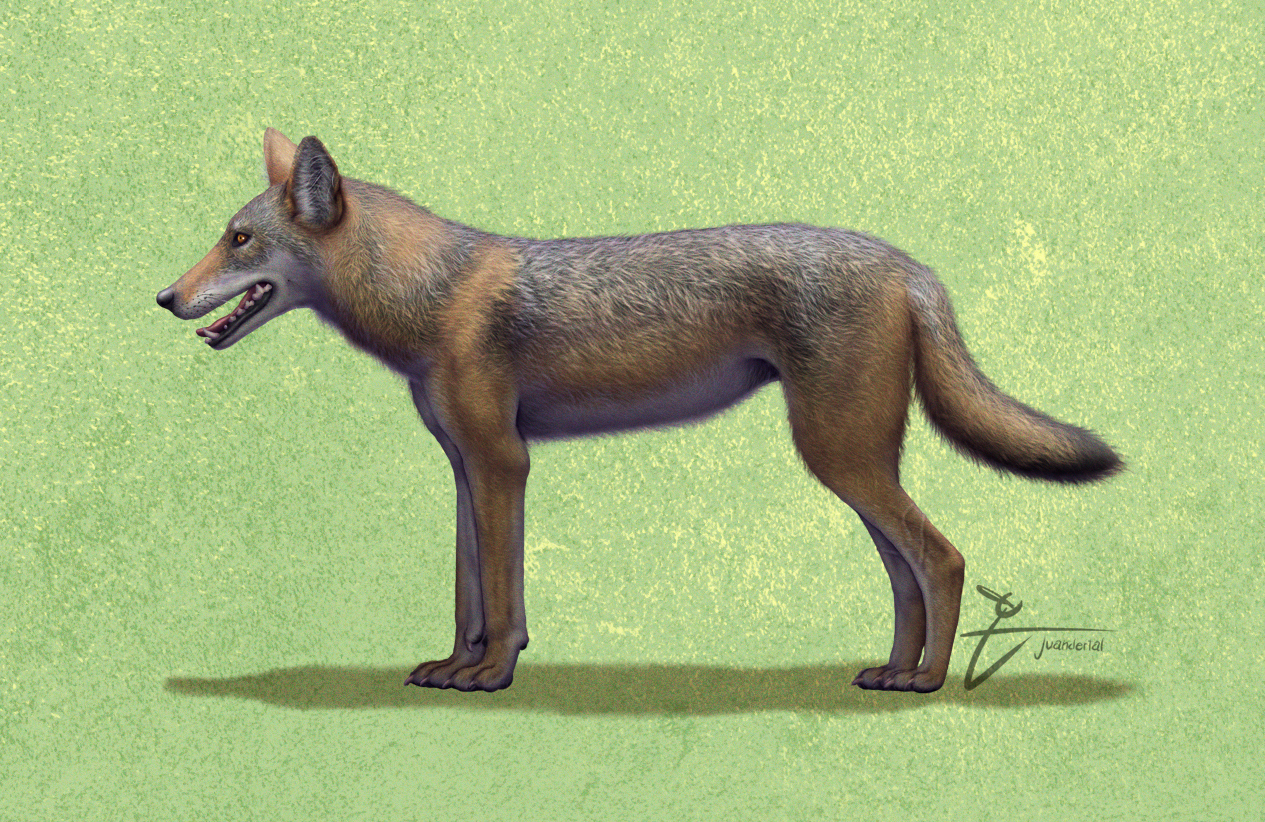|
Tritemnodon
''Tritemnodon'' ("three cutting teeth") was an extinct genus of placental mammals from extinct order Hyaenodonta, that lived in North America during the early Eocene.Naoko Eg (2004."A new genus and species of hyaenodontid creodont from the Pondaung Formation (Eocene, Myanmar)"''Journal of Vertebrate Paleontology'' 24(2): 502–506 Fossils of ''Tritemnodon agilis'' have been found in Utah and Wyoming (Willwood Formation of Big Horn County and the Lower Bridger Formation of Uinta County). It was the size of a wolf The wolf (''Canis lupus''; : wolves), also known as the grey wolf or gray wolf, is a Canis, canine native to Eurasia and North America. More than thirty subspecies of Canis lupus, subspecies of ''Canis lupus'' have been recognized, includin .... References Hyaenodonts Eocene mammals of North America Prehistoric placental genera {{paleo-mammal-stub ... [...More Info...] [...Related Items...] OR: [Wikipedia] [Google] [Baidu] |
Hyaenodonta
Hyaenodonta (" hyena teeth") is an extinct order of hypercarnivorous placental mammals of clade Pan-Carnivora from mirorder Ferae. Hyaenodonts were important mammalian predators that arose during the early Paleocene in Europe and persisted well into the late Miocene. Characteristics Hyaenodonts are characterized by long, often disproportionately large skulls, slender jaws, and slim bodies. They generally ranged in size from 30 to 140 cm at the shoulder. While '' Simbakubwa kutokaafrika'' may have been up to (surpassing the modern polar bear in size), this estimate is suspect due to being based on skull-body size ratios derived from felids, which have much smaller skulls for their body size. Other large hyaenodonts include two close and later-surviving relatives of ''Simbakubwa'', '' Hyainailouros'' and '' Megistotherium'' (the latter likely being the largest in the group), and the much earlier-living '' Hyaenodon gigas'' (the largest species from genus '' Hyaenodo ... [...More Info...] [...Related Items...] OR: [Wikipedia] [Google] [Baidu] |
Eocene
The Eocene ( ) is a geological epoch (geology), epoch that lasted from about 56 to 33.9 million years ago (Ma). It is the second epoch of the Paleogene Period (geology), Period in the modern Cenozoic Era (geology), Era. The name ''Eocene'' comes from the Ancient Greek (''Ēṓs'', 'Eos, Dawn') and (''kainós'', "new") and refers to the "dawn" of modern ('new') fauna that appeared during the epoch.See: *Letter from William Whewell to Charles Lyell dated 31 January 1831 in: * From p. 55: "The period next antecedent we shall call Eocene, from ήως, aurora, and χαινος, recens, because the extremely small proportion of living species contained in these strata, indicates what may be considered the first commencement, or ''dawn'', of the existing state of the animate creation." The Eocene spans the time from the end of the Paleocene Epoch to the beginning of the Oligocene Epoch. The start of the Eocene is marked by a brief period in which the concentration of the carbon isoto ... [...More Info...] [...Related Items...] OR: [Wikipedia] [Google] [Baidu] |
Genus
Genus (; : genera ) is a taxonomic rank above species and below family (taxonomy), family as used in the biological classification of extant taxon, living and fossil organisms as well as Virus classification#ICTV classification, viruses. In binomial nomenclature, the genus name forms the first part of the binomial species name for each species within the genus. :E.g. ''Panthera leo'' (lion) and ''Panthera onca'' (jaguar) are two species within the genus ''Panthera''. ''Panthera'' is a genus within the family Felidae. The composition of a genus is determined by taxonomy (biology), taxonomists. The standards for genus classification are not strictly codified, so different authorities often produce different classifications for genera. There are some general practices used, however, including the idea that a newly defined genus should fulfill these three criteria to be descriptively useful: # monophyly – all descendants of an ancestral taxon are grouped together (i.e. Phylogeneti ... [...More Info...] [...Related Items...] OR: [Wikipedia] [Google] [Baidu] |
North America
North America is a continent in the Northern Hemisphere, Northern and Western Hemisphere, Western hemispheres. North America is bordered to the north by the Arctic Ocean, to the east by the Atlantic Ocean, to the southeast by South America and the Caribbean Sea, and to the south and west by the Pacific Ocean. The region includes Middle America (Americas), Middle America (comprising the Caribbean, Central America, and Mexico) and Northern America. North America covers an area of about , representing approximately 16.5% of Earth's land area and 4.8% of its total surface area. It is the third-largest continent by size after Asia and Africa, and the list of continents and continental subregions by population, fourth-largest continent by population after Asia, Africa, and Europe. , North America's population was estimated as over 592 million people in list of sovereign states and dependent territories in North America, 23 independent states, or about 7.5% of the world's popula ... [...More Info...] [...Related Items...] OR: [Wikipedia] [Google] [Baidu] |
Utah
Utah is a landlocked state in the Mountain states, Mountain West subregion of the Western United States. It is one of the Four Corners states, sharing a border with Arizona, Colorado, and New Mexico. It also borders Wyoming to the northeast, Idaho to the north, and Nevada to the west. In comparison to all the U.S. states and territories, Utah, with a population of just over three million, is the List of U.S. states and territories by area, 13th largest by area, the List of U.S. states and territories by population, 30th most populous, and the List of U.S. states by population density, 11th least densely populated. Urban development is mostly concentrated in two regions: the Wasatch Front in the north-central part of the state, which includes the state capital, Salt Lake City, and is home to roughly two-thirds of the population; and Washington County, Utah, Washington County in the southwest, which has approximately 180,000 residents. Most of the western half of Utah lies in ... [...More Info...] [...Related Items...] OR: [Wikipedia] [Google] [Baidu] |
Wyoming
Wyoming ( ) is a landlocked U.S. state, state in the Mountain states, Mountain West subregion of the Western United States, Western United States. It borders Montana to the north and northwest, South Dakota and Nebraska to the east, Idaho to the west, Utah to the southwest, and Colorado to the south. With an estimated population of 587,618 as of 2024, Wyoming is the List of U.S. states and territories by population, least populous state despite being the List of U.S. states and territories by area, 10th largest by area, and it has the List of U.S. states by population density, second-lowest population density after Alaska. The List of capitals in the United States, state capital and List of municipalities in Wyoming, most populous city is Cheyenne, Wyoming, Cheyenne, which had a population of 65,132 in 2020. Wyoming's western half consists mostly of the ranges and rangelands of the Rocky Mountains; its eastern half consists of high-elevation prairie, and is referred to as th ... [...More Info...] [...Related Items...] OR: [Wikipedia] [Google] [Baidu] |
Big Horn County, Wyoming
Big Horn County is a county in the U.S. state of Wyoming. As of the 2020 United States census, the population was 11,521. The county seat is Basin. Its north boundary abuts the south boundary of Montana. History Big Horn County was created by the legislature of Wyoming Territory in March 1890, and was organized in 1897; its area was annexed from Fremont, Johnson, and Sheridan counties. Big Horn County was named for the Big Horn Mountains which form its eastern boundary. Originally, the county included the entire Big Horn Basin, but in 1909 Park County, WY was created from a portion of Big Horn County, and in 1911 Hot Springs and Washakie counties were created from portions of Big Horn, leaving the county with its present borders. There were large amounts of first generation immigrants from England and Germany living in Big Horn County when World War I broke out in Europe. The two groups went out of their way to maintain cordial relations with one another, and the c ... [...More Info...] [...Related Items...] OR: [Wikipedia] [Google] [Baidu] |
Uinta County
Uinta County ( ) is a county in the U.S. state of Wyoming. As of the 2020 United States Census, the population was 20,450. Its county seat is Evanston. Its south and west boundary lines abut the Utah state line. Uinta County, together with Rich County, Utah, comprises the Evanston, WY-UT Micropolitan Statistical Area. History Uinta County was created on December 1, 1869, by the legislature of the Wyoming Territory, with its temporary seat located at Fort Bridger. Originally, it ran along the entire western border of Wyoming, including Yellowstone National Park. The county was named for Utah's Uinta Mountains, which are noticeable from many places in the county. The county was given its present boundaries in 1911 when Lincoln County was carved out of the northern part of Uinta County. Geography According to the U.S. Census Bureau, the county has a total area of , of which is land and (0.3%) is water. It is the second-smallest county in Wyoming by area. Geology The ... [...More Info...] [...Related Items...] OR: [Wikipedia] [Google] [Baidu] |
Wolf
The wolf (''Canis lupus''; : wolves), also known as the grey wolf or gray wolf, is a Canis, canine native to Eurasia and North America. More than thirty subspecies of Canis lupus, subspecies of ''Canis lupus'' have been recognized, including the dog and dingo, though grey wolves, as popularly understood, only comprise Wild type, naturally-occurring wild subspecies. The wolf is the largest wild Neontology, extant member of the family Canidae, and is further distinguished from other ''Canis'' species by its less pointed ears and muzzle, as well as a shorter torso and a longer tail. The wolf is nonetheless related closely enough to smaller ''Canis'' species, such as the coyote and the golden jackal, to produce fertile Canid hybrid, hybrids with them. The wolf's fur is usually mottled white, brown, grey, and black, although subspecies in the arctic region may be nearly all white. Of all members of the genus ''Canis'', the wolf is most Generalist and specialist species, specializ ... [...More Info...] [...Related Items...] OR: [Wikipedia] [Google] [Baidu] |
Hyaenodonts
Hyaenodontidae ("hyena teeth") is a family of placental mammals in the extinct superfamily Hyaenodontoidea. Hyaenodontids arose during the early Eocene and persisted well into the early Miocene. Fossils of this group have been found in Asia, North America and Europe Europe is a continent located entirely in the Northern Hemisphere and mostly in the Eastern Hemisphere. It is bordered by the Arctic Ocean to the north, the Atlantic Ocean to the west, the Mediterranean Sea to the south, and Asia to the east .... (1985): ''The Field Guide to Prehistoric Life.'' Facts on File Publications, New York. Classification and phylogeny Taxonomy References {{Authority control Hyaenodonts Eocene mammals Eocene extinctions Eocene mammals of North America Extinct mammals of North America Prehistoric mammal families ... [...More Info...] [...Related Items...] OR: [Wikipedia] [Google] [Baidu] |
Eocene Mammals Of North America
The Eocene ( ) is a geological epoch that lasted from about 56 to 33.9 million years ago (Ma). It is the second epoch of the Paleogene Period in the modern Cenozoic Era. The name ''Eocene'' comes from the Ancient Greek (''Ēṓs'', 'Dawn') and (''kainós'', "new") and refers to the "dawn" of modern ('new') fauna that appeared during the epoch.See: *Letter from William Whewell to Charles Lyell dated 31 January 1831 in: * From p. 55: "The period next antecedent we shall call Eocene, from ήως, aurora, and χαινος, recens, because the extremely small proportion of living species contained in these strata, indicates what may be considered the first commencement, or ''dawn'', of the existing state of the animate creation." The Eocene spans the time from the end of the Paleocene Epoch to the beginning of the Oligocene Epoch. The start of the Eocene is marked by a brief period in which the concentration of the carbon isotope 13C in the atmosphere was exceptionally low in com ... [...More Info...] [...Related Items...] OR: [Wikipedia] [Google] [Baidu] |







